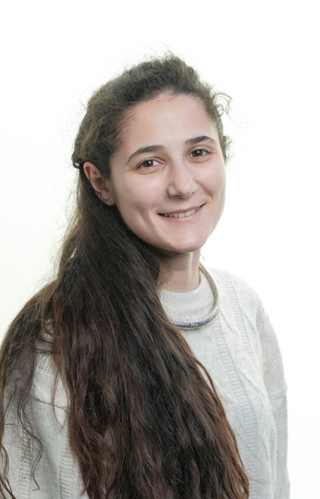Know the past to see the future: Memory and prediction in in-vitro cortical neurons
Martina Lamberti is a PhD student in the Department Clinical Neurophysiology. (Co)Promotors are prof.dr.ir. M.J.A.M. van Putten and dr.ir. J. Le Feber from the Faculty of Science & Technology.
 Memory has been extensively studied at both the behavioral and cellular levels. Memory can be divided into short-term memory, where memories are retained for short periods (timescale of seconds), and long-term memory, which allows us to remember things even for years (timescale of minutes to years). Episodic memories are first encoded, then consolidated, and can later be retrieved. In this study, we focused on memory consolidation. In this phase, new experiences encoded in the hippocampus are replayed, triggering neocortical areas in a process called systems consolidation. This process mainly occurs during slow-wave sleep and leads to the long term storage of information in the neocortex. Various studies have shown that sleep improves memory consolidation, but little is known about the cellular mechanisms involved. It is generally believed that spike timing-dependent plasticity (STDP), a mechanism that adjusts the strength of synaptic connections based on the timing of pre- and post-synaptic action potentials, plays a crucial role in memory, but knowledge about the specific processes involved is scarce.
Memory has been extensively studied at both the behavioral and cellular levels. Memory can be divided into short-term memory, where memories are retained for short periods (timescale of seconds), and long-term memory, which allows us to remember things even for years (timescale of minutes to years). Episodic memories are first encoded, then consolidated, and can later be retrieved. In this study, we focused on memory consolidation. In this phase, new experiences encoded in the hippocampus are replayed, triggering neocortical areas in a process called systems consolidation. This process mainly occurs during slow-wave sleep and leads to the long term storage of information in the neocortex. Various studies have shown that sleep improves memory consolidation, but little is known about the cellular mechanisms involved. It is generally believed that spike timing-dependent plasticity (STDP), a mechanism that adjusts the strength of synaptic connections based on the timing of pre- and post-synaptic action potentials, plays a crucial role in memory, but knowledge about the specific processes involved is scarce.
Another interesting brain function is prediction. It is hypothesized that prediction is essential for completing an action efficiently and successfully and that it depends on memory. Unlike memory, prediction has mainly been studied in theoretical and computational work. Whether prediction is a general capability of neural networks, what mechanisms are involved, and to what extent it depends on memory remain open questions.
We cultured in-vitro networks of dissociated cortical neurons from rats on microelectrode arrays (MEAs) with the aim of investigating the underlying mechanisms of memory and prediction. These networks were subjected to experimental protocols involving focal (electrical) and/or global (optogenetic) stimulation to specifically study memory consolidation or prediction. Prediction was measured using mutual information, and memory by looking at changes in functional connectivity. Functional connectivity was determined using Conditional Firing Probability (CFP), a cross-correlation-based method that analyzes spontaneous activity patterns. Since stimulation periods were quite long in some of the protocols (> 10 hours), it would be valuable to assess connectivity changes during stimulation as well, which could be done using Maximum Entropy (MaxEnt) models. If constructed stimulus dependently, these models have the potential to be used during stimulation, and they also enable distinguishing between inhibitory and excitatory connections. Since this is a completely new technique, we first verified that MaxEnt models provide reliable estimates of network connectivity.
Slow wave sleep is characterized in the cortex by low cholinergic tone and little afferent (background) input. We have shown that in in-vitro networks, the presence of background input hampered memory consolidation, and reduced network excitability. This finding, along with results from a previous study showing that high cholinergic tone impairs memory consolidation and lowers network excitability, suggests that high network excitability is essential for this memory function. Besides memory function, we have also demonstrated that cultured neural networks are capable of prediction and that this depends on short-term memory. This dependency decreases over time as networks form long-term memory traces of a stimulus. To better understand the relationship between memory and prediction, we looked at the importance of NMDA receptor activation, a crucial step in STDP. The observation that blocking NMDA receptors impaired long-term memory without directly affecting prediction confirms the role of STDP in long-term memory and aligns with the finding that prediction mainly depended on short-term memory. Under NMDA blockade, prediction remained fully dependent on short-term memory, even after more than 10 hours.
In conclusion we developed an in-vitro model and mathematical tools to investigate memory and prediction and used them to study underlying mechanisms





